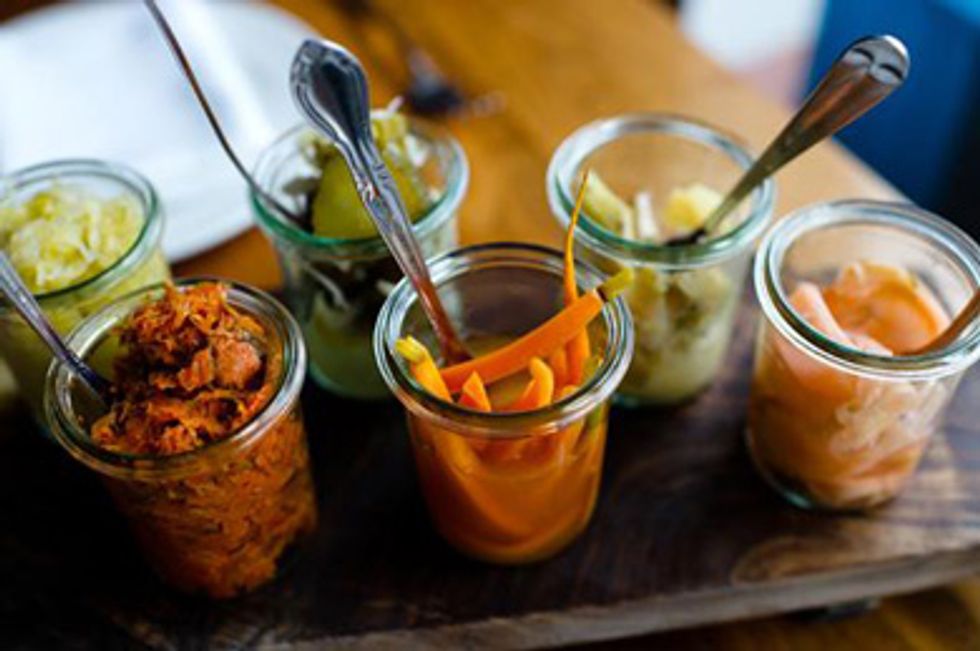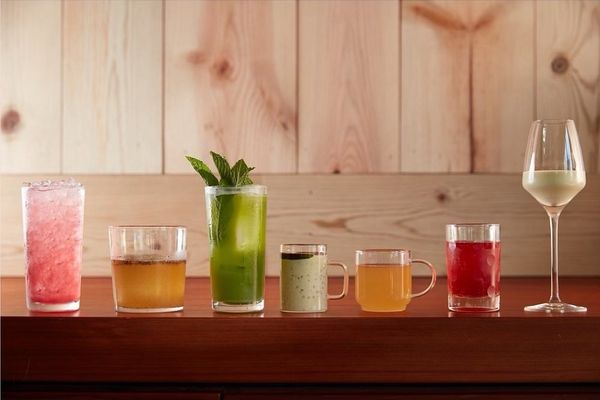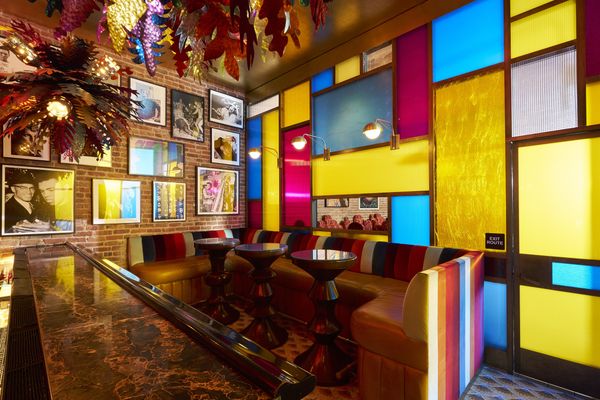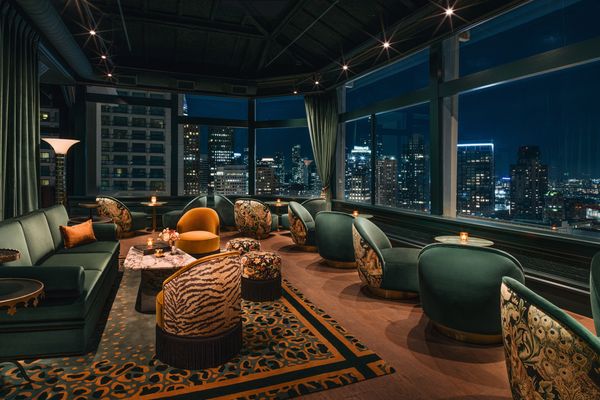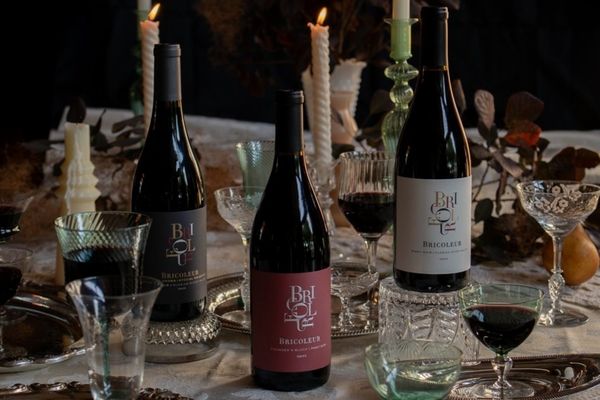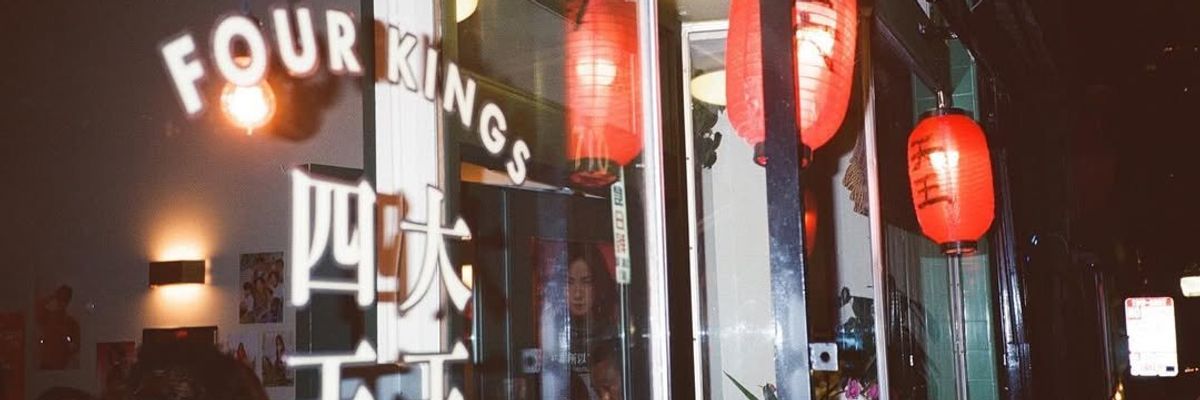Remember those pickles from Vlasic with the smiling stork on the front? Well you can forget about them. Pickles may be everywhere in San Francisco right now, but they're way outside the bread-and-butter box. Think pickled baby green tomatoes, turmeric-pickled cauliflower, cabbage in chili paste, or any of the thirty something other pickles Nick Balla will rotate into the dedicated pickle section on the menu at Bar Tartine. He's not the only one up to his elbows in brine these days. Hayes Valley's new Boxing Room has a pickle section on its menu too. And Danny Bowien is serving pickled peanuts to the masses at his flagrantly popular Mission Chinese Food. Why pickles? And why now? Balla thinks the pickle movement springs from a collective new openness to more ethnic flavors in slightly higher end restaurants. After talking to a slew of chefs around town about their best pickle practices, I'd have to agree.
Izakaya Sozai chef Ritsu Osuka says pickles or tsukemono are traditionally eaten in Japan as a salty snack with sake, "kind of like peanuts in the U.S." To this end, Osuka rotates the offerings on his delicate pickle plate seasonally. Right now that means Japanese baby cucumber, mustard leaf, shallots and daikon radish. All of them are pickled using the asazuke method, involving a day-and-a-half-long steep in dashi, salt and rice vinegar. Along similar lines, Nombe chef Mari Takahashi makes traditional nuka zuke with carrots, cucumbers and daikon. Takahashi encourages non-drinkers to use pickles as a palate cleanser.
Representing the American school of thought, Ian Marks of Beast and the Hare thinks its important to serve vinegar-forward pickled things to cut through rich food. "Our duck confit salad has quick pickled cucumbers and radishes, our avocado toast has pickled shallots to balance the fat, and our fritto misto comes with fried pickles and chive aioli. "It's a really a nice surprise compared with the regular heavy-battered fritto's out there." Marks makes so many pickles, he's worried they're staring to overrun his walk-in space in the kitchen. "It's addictive," he says. "I have thought about teaching classes, and we've got a partnership pickle project coming up with Wise Sons Deli."
At Hayes Valley's brand new Boxing Room, chef Justin Simoneaux pickles a melange of quail eggs, beets, green beans, carrots, okra and watermelon rinds. Each one gets a different treatment—like ginger and curry powder seasonings for the carrots, and sugar and cinnamon on the rinds "for a really sweet flavor."
Then there's the fermented pickle camp, where Balla and other studious pickle-making types tend to fall. As opposed to the American vinegar pour-over method, fermenting requires the right amount of salt soaking to ensure pickling takes place. Danny Bowien likes fermenting pickles to "add brightness and character." Right now at Mission Chinese Food, he has long beans, "chili-pickled" by soaking them in shoyu and chili for seven days.
"The living bacteria are really good for digestion," adds Balla. "But that's not why I eat them. Just start a meal with a glass of sherry and some pickles. Perfection."
Other housemade pickles of note around town:
1) Seasonal, pickled sea beans, okra, spring onions, cactus and summer squash atBar Agricole.
2) Beer-battered "frickles" (fried pickles) served with homemade buttermilk dressing at Marengo.
Tell us about your favorite SF pickle in the comments.



